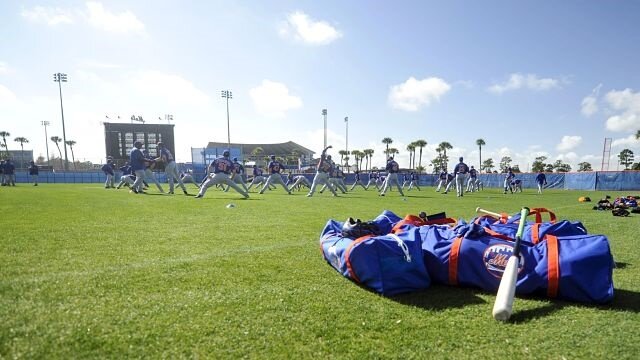Detroit Tigers’ Joe Nathan Must Learn To Succeed Without The Help Of Blazing Fastball
On Dec. 4, 2013, the Detroit Tigers signed closer Joe Nathan to a reported two-year, $20 million deal. Given the team’s problems with the closer’s role ever since Jose Valverde went 49-for-49 in save opportunities back in 2011, most fans were ecstatic.
Sure, Joaquin Benoit did a more than admirable job saving games, taking over full-time once the Tigers decided to cut ties with Valverde once and for all. However, after giving up the game-tying grand slam to David Ortiz in Game 2 of the 2013 ALCS, there were few who questioned replacing Benoit with Nathan — at the time.
Unfortunately, the Nathan who was on display in 2014 appeared to be a shell of the pitcher who used to dominate the Tigers while pitching for the Minnesota Twins and later the Texas Rangers. Excluding Nathan’s 2011 season, which was the year he was coming back from Tommy John surgery, 2014 was by far and away his worst season since his early days with the San Francisco Giants.
Obviously, some might point to the now 40-year-old Nathan’s age as a factor. However, many have also been quick to point out that he just had back-to-back All-Star appearances with the Rangers from 2012-2013 at the ages of 37 and 38, accumulating 4.3 fWAR over that two-year period. So if Father Time is indeed part of the problem, why did Nathan’s decline seemingly happen so fast and suddenly rather than slow and steadily?
Well, there may be a little bit more to the story. There is some evidence to suggest that the warning signs may have already been there at the time the Tigers brought him aboard.
While Nathan indeed had a fine year in 2013, one can see that he may have been getting a bit lucky. For starters, the first thing that stuck out about Nathan’s 2013 was his microscopic 1.39 ERA. However, while his ERA estimators were not bad by any stretch of the imagination, they were all higher than his actual ERA, with his FIP, xFIP and SIERA settling in at 2.26, 3.27 and 2.75 respectively, suggesting that some regression was coming.
Nathan’s unsustainable 3.0 HR/FB, which tied for second-best in the AL among qualified relievers, further indicated that luck was on his side, as did his .224 BABIP. Plus, it didn’t hurt that the Rangers had a 6.8 UZR/150 and a 37.6 Def rating to help him out with their fancy glove work.
That being said, Nathan still showed that he was plenty capable of retiring batters via the strikeout, posting a very solid 10.16 K/9. It was slightly down from his mark of 10.91 in 2012, but still good enough to rank 32nd among 135 qualified relievers in MLB. At a closer glance at his repertoire, however, the average velocity of his four-seam fastball went from 94.73 mph in 2012 down to 93.20 in 2013, per Brooks Baseball.
There was also a noticeable jump in Nathan’s usage of his slider, going from 24.77 percent in 2012 to 35.0 percent in 2013. While some might argue that this was a direct result of an adjustment made to compensate for the loss of velocity, perhaps it is also because the slider was simply a very good weapon for him, receiving a PITCHf/x value of 7.0 runs above average according to Fangraphs. For whatever reason, he seemed to be throwing one of his best sliders ever.
Plus, even though Nathan lost some steam off of the four-seamer and began using it less frequently, its 9.1 PITCHf/x value showed that it was still a very good pitch for him as well. As seen in the heat map below, opponents had a hard time hitting Nathan’s fastball in 2013, save for a select few locations.
Last season, Nathan threw a comparable number of four-seam fastballs, but saw his velocity shrink all the way down to an average of 92.72 mph. The pitch also appeared to be much more hittable, and he was getting crushed in the middle of the zone, which can be seen in following heat map. According to Fangraphs’ Plate discipline data, he had a career-high 90.2 Z-contact rate, which further proved that he was hardly fooling anyone on anything that was thrown in the zone.
While Nathan could get away with his diminished velocity in 2013, he didn’t appear to be as fortunate in 2014.
The next chart illustrates the noticeable drop in Nathan’s maximum release speed in the two seasons since 2012.
According to Brooks Baseball, opponents hit .312 against Nathan’s four-seam fastball last season. His slider, however, was still a decent pitch for him, particularly against lefties, who batted only .189 against it.
At the end of the day, Nathan finished the season 5-4 with a 4.81 ERA and a 1.53 WHIP. He did rack up 35 saves, but he also blew seven, which was a career-high. In high-leverage situations, he had a whopping 4.84 xFIP, a rather alarming figure for a closer.
Although his K/9 was still solid enough at 8.38, it was a 11-year low for him, and so was his 20.9 percent strikeout percentage. Nathan’s 9.2 swinging strike percentage represented only the second time since 2002 that he failed to reach double-digits in that department, the only other time being his aforementioned 2011 season.
To put it simply, there were many signs that suggested he may no longer be capable of being the same type of strikeout machine that he was in his younger days.
As far as balls in play are concerned, the fact that Nathan’s BABIP was .100 points higher than it was in 2013 at .324 wasn’t exactly encouraging either. Some of that, however, can probably be blamed on bad luck, especially when considering the Tigers’ defensive woes in 2014. In contrast to the 2013 season, his ERA estimators were better than his actual ERA, settling in at 3.94 FIP, 4.14 xFIP and 3.88 SIERA, which may paint a more optimistic picture.
The other factor that hurt Nathan last season was his poor control. He posted a 4.50 BB/9, which was his worst mark in that department since posting a 6.08 BB/9 for the Giants back in 2000 — when he logged the majority of his time as a starter. This obviously helps to explain the 1.53 WHIP. Perhaps the 3.06 BB/9 he posted in 2013, which was up from 1.82 in 2012, was a precursor for what was to come.
There are, however, still some reasons to be cautiously optimistic about Nathan having a bounce-back season in 2015.
One of the things that Nathan did relatively well last season was induce ground balls, posting a 41.6 percent ground-ball rate. Although it was not a career-high, it was still significantly higher than his 32.0 percent mark from 2013. If he can no longer rack up the strikeouts at the rate he once could, an increase in ground balls may very well be a positive sign going forward.
Nathan’s sinker may be a pitch worth keeping an eye on in 2015. As seen in the chart below, it generated a fair amount of ground balls per BIP, especially in the final three months of the season.
Although the pitch appeared to be generating a high number of fly balls earlier in the year, that became less of an issue as the season wore on.
Although his 2014 season was pretty rocky from start to finish, some of Nathan’s splits did look better in the second half. Aside from an impressive stretch from late-April to mid-May, Nathan’s first half was a disaster, with the closer posting a 5.61 ERA and a 1.51 WHIP. While his WHIP rose to an even higher 1.56 after the All-Star break, the fact that his ERA dropped to 3.70 was certainly a good sign.
Nathan also allowed only a .298 wOBA after the All-Star break, compared to .336 in the first half. He pitched a clean inning in Game 3 of the 2014 ALDS against the Baltimore Orioles as well.
Furthermore, Nathan also had a ground-ball rate of over 40 percent in each month after May, and his K/9 dropped from 9.36 in the first half down to 7.03 in the second half, which may suggest that he was more focused on getting outs than strikeouts as the season progressed.
Seeing as how Nathan is now 40 years old, it is unlikely for his velocity to suddenly return. The odds of him being the pitcher who posted a 12.51 K/9 with the Twins in 2006 ever again are incredibly slim. Therefore, if getting quick outs was indeed his goal in the second half, perhaps he should stick with the same mindset heading into 2015.
For what it is worth, Fangraphs Steamer projects Nathan at a 3.67 ERA, 3.86 FIP, 1.26 WHIP and 2.97 BB/9, which would indicate better control. He is projected to have a 8.05 K/9, which would be even lower than his mark from 2014, although it is still enough for him to find some success. Nathan is projected to have a below-average .287 BABIP as well, which does seem to be a realistic number.
After all, with Jose Iglesias returning to reclaim shortstop and joining 2014 Gold Glove finalists Ian Kinsler and Miguel Cabrera (once he is healthy), the Tigers should have an improved infield.
It will, however, be interesting to see how well Nick Castellanos will fare at the hot corner in his sophomore season after putting up less-than-stellar defensive marks during his rookie campaign. Considering he will still only be 23 years old at the start of the season, he should have plenty of room to improve under the tutelage of infield coach Omar Vizquel.
Obviously, most would prefer to have a closer who can strike people out rather than one who pitches to contact, but Nathan’s projected 8.05 K/9 is still much better than the 3.94 K/9 that Todd Jones posted for the Tigers when they went to the World Series in 2006.
If he can’t return to form, perhaps it is time for Nathan to reinvent himself in 2015.
*All statistical information courtesy of Baseball Reference, Brooks Baseball, ESPN.com and Fangraphs
Brad Faber is a Senior Writer and Sabermetrics Columnist for www.RantSports.com. Follow him on Twitter @Brad_Faber, “Like” him on Facebook, or add him to your network on LinkedIn or Google.
Will Atlanta Braves Compete in 2015?
Not many expect the Atlanta Braves to make an impact in 2015. Many Braves fans are curious if they can actually compete this year. Read More
Can Royals' Kendrys Morales Outplay Billy Butler?
The Kansas City Royals desperately need Kendrys Morales to provide them with some consistent offense and anchor the batting lineup in 2015. Read More
Injury Could Be Setback for Melvin Upton Jr.
The Atlanta Braves announced Friday that Melvin Upton Jr. will be out 4-6 weeks due to a left foot injury. His absence allows others to compete for his spot which does not bode well for Upton Jr. Read More
Difference Between Kansas City's Outfielders
The corner outfielders for the Kansas City Royals are two very different dudes, whether we're talking about their personalities, their production or their levels of consistency. Read More
Did Edinson Volquez Reinvent Himself With Royals?
After several years of struggling, Edinson Volquez pitched the best season of his career in 2014. Can he reinvent himself with the Kansas City Royals? Read More
MLB Projections Not Exactly High on 2015 Royals
The early projections for the 2015 Kansas City Royals and the rest of the MLB are in, and they don't look too inspiring for Royals fans. Read More
Mets Must be Realistic Despite High Expectations
Everyone knows the New York Mets can be good, but now they have to prevent that from getting to their heads and show us that they can be a good team. Read More
Royals' Speedsters Add Intrigue To Spring Training
The Kansas City Royals have no lack of speed in their organization, and two prospects we'll see during Spring Training will make sure that's true for years to come. Read More
5 Twins Rookies To Watch In 2015 Spring Training
The Minnesota Twins and their fans have plenty of good reasons for optimism this year, and these five rookies are just part of the story. Read More
Bullpen Battles Abound For 2015 Royals
Louis Coleman is one of many relievers on the bubble of earning a spot in the Kansas City Royals' bullpen in 2015. Read More
Mets Could Have Great Year With Kevin Long
Kevin Long was a great hitting coach with the New York Yankees. Now that he's with the New York Mets, there's no reason to assume he can't perform the same wonders. Read More
Lefties Clouding KC's Bullpen Situation in 2015
The Kansas City Royals can boast about having one of the best bullpens in baseball history last season, but they still have plenty of questions to answer before the 2014 regular season begins. Read More









 @Brad_Faber
@Brad_Faber 





















